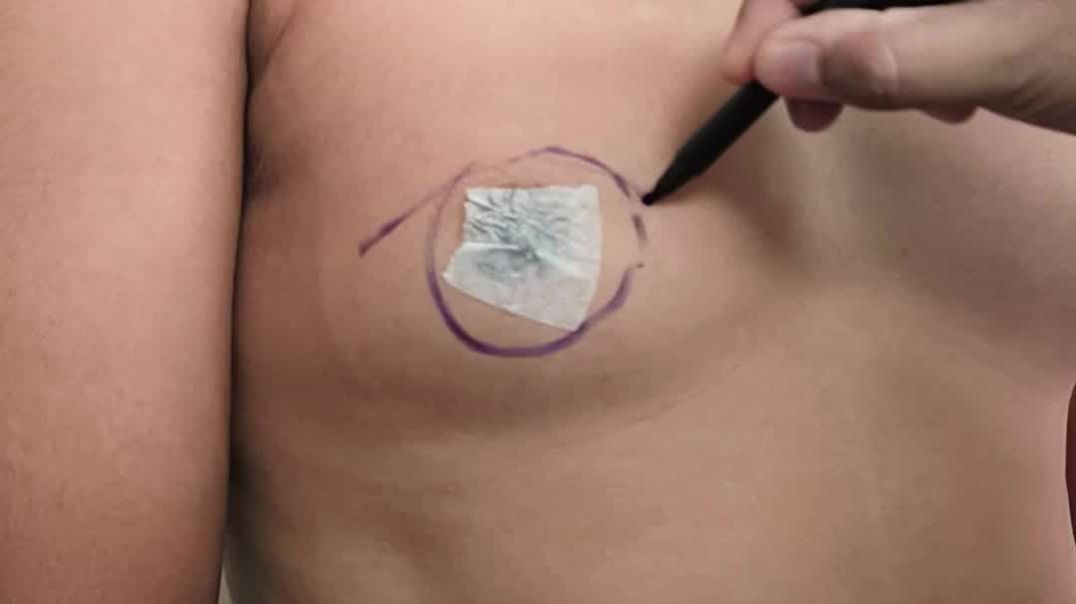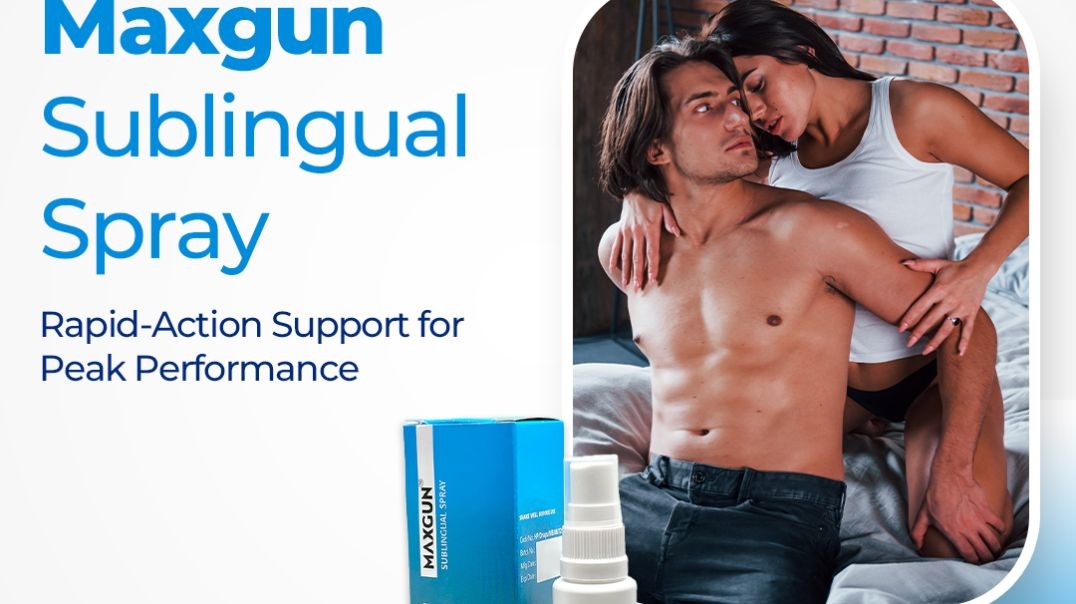Top videos
Gynecomastia is classified into different grades in India, depending on the size and type of tissue. In Grade 2 cases, the gland can feel either hard like a stone or soft like fat. It usually sits in the center of the chest. Many patients experience a mix of fat and gland tissue, making surgical correction necessary.
Visit- https://www.divinecosmeticsurg....ery.com/gynecomastia
#gynecomastiasurgery #gynecomastiabeforeandafter #gyno #dramitgupta #divinecosmeticsurgery
Waklert 150mg is known as the ultimate cognitive enhancer for amplifying productivity. With Waklert, unlock your entire mental capability and let magic begin. Full of benefits and laboriously crafted with precision, this invaluable supplement is what was missing in your life. Waklert 150mg is a commonly prescribed medicine for those persons who want to feel more alert and concentrated for long periods. Waklert, with its active ingredient Armodafinil, helps promote wakefulness. This medication does wonders by stimulating activity in the brain and keeping you vigilant and sharp throughout the day. You will experience a huge boost in productivity along with mental clarity once Waklert unleashes your brain's potential. It enhances the information retaining capability to the fullest within you, and you are able to absorb like a sponge so that you deliver the best output at any given task or project. Always be ahead, never miss deadlines, and put in the best possible levels of performance at work and studies. Not only will Waklert keep your cognitive faculties at their best, but the medicine also keeps you very positive, eliminating fatigue. Say goodbye to sluggishness and hello to a more energetic and rejuvenated self. Stay motivated for a longer time and create a sense of well-being, that too leading you to achieve your goals with unmatched determination. Be rest assured that Waklert is manufactured according to the highest standard in which safety and efficacy will be guaranteed.Buy Waklert 150mg online at our web store https://www.firstchoicemedss.c....om/waklert-150mg.htm
Are you considering gynecomastia and wondering about the risks involved in it? So, watch this video till the end, as we discuss all the risks and complications involved in gynecomastia and how to prevent them.
In this video, we will elaborate on the following risks in detail:
✅Bleeding
✅Infection
✅Shape of your chest after surgery
✅Saggy skin
✅Scarring after procedure
So, if you have any questions regarding gynecomastia, contact us, and we will be more than happy to assist you.
#gynecomastia #manboobsurgery #drrajatgupta #plasticsurgeondelhi #skintightening #malebreast #gynecomastiatreatment
------------------------------------------------------------------------------------------------------------------------
About Dr. Rajat Gupta and RG Aesthetics
At RG Aesthetics, India’s best plastic surgeon, Dr. Rajat Gupta is at your service! With 13 years of experience, brand certification, and international recognition, Dr. Gupta is the solution to all your contouring needs.
His expertise in liposuction techniques combined with the state-of-the-art technology available at RG Aesthetics ensures we continue providing the most reliable services with incredible, instantaneous results!
Our equipment allows for every kind of liposuction there is – especially the minimally invasive kinds. Dr. Gupta reflects RG Aesthetics’ belief of the patient’s comfort always being paramount. Procedures at RG Aesthetics, under Dr. Rajat Gupta, minimize trauma and speed up recovery time for the best results!
Schedule a Consultation:
✅ Call: +91 - 9251-711-711
✅ contact@drrajatgupta.com
✅ Visit: https://www.drrajatgupta.com
✅https://www.instagram.com/rajatguptadr
✅https://www.facebook.com/drrajatgupta/
✅https://www.linkedin.com/in/rajat-gupta-9a6b23119/
Buy Femalefil 10mg Tablet is a powerful medicine intended only for women's use. The medicine has an active component of Female Tadalafil 10mg. Today Call Now!!!
Buy Now : https://www.rsmenterprises.in/....product/viewdetail/t
#rsmenterprises #health #healthcare #femaletadalafil10mg #femalefil10mg #femalegenericcialis #femalesensualpills
Treatment for erectile dysfunction (ED) in men consists of the use of tadaga 10 mg. The most indicative symptom of ED, which is a prevalent condition of the senses, is the inability to obtain or sustain an erection sufficient for pleasurable sensual activity.Tadalafil, a phosphodiesterase type 5 (PDE5) inhibitor, is the primary component in this.Since it does relaxes the smooth muscle of the genital blood vessels and enhances blood supply to the genital organ, this product helps men to achieve and sustain an erection. You must ingest this orally, ideally 30 minutes prior to engaging in anything sensual.Remember to understand that an erection induced by this drug still needs sensuous stimulation. Since it has a maximum 36-hour duration of action, it is colloquially known as the "weekend pill". Similar to any medications, there can be a risk of side effects, although most people can tolerate this. Side effects are headache, dyspepsia, backache, and muscular aches. Generally, a couple of hours lapse and these side effects resolve by themselves. There is a remote possibility of having more serious side effects, including sudden vision or hearing loss. If you experience any of these symptoms, you need to seek medical help as soon as possible. Prior to embarking on any new treatment, it is crucial that you discuss with your physician to ensure that it is a safe and suitable option.Buy Tadaga 10mg online at our web store https://www.firstchoicemedss.com/tadaga-10mg.html
Without a doubt, Caverta 100mg is the best solution to lead a good and healthy personal life. An extraordinary medication, Caverta 100mg is designed to overcome all issues of ED in you and help regain your sensual power and general quality of life. You can buy Caverta 100mg tablets online in Australia.This powerful formulation Caverta 100mg and its proven track record have made it an ideal companion for men seeking a reliable and efficient drug. The active elements of Sildenafil citrate present in this effective medicine relax the muscles and increase blood flow in the penile area to ensure that a firm and long-lasting erection is achieved. Every pill is well produced with utmost diligence in order to ensure proper dosage and quick response. Caverta 100mg has empowered you to enjoy spontaneous, fulfilling lovemaking whenever the urge strikes, thus leaving anxieties and frustration of ED in the dust. A phenomenal reliability and safety record are what make Caverta 100mg really stand out from the rest of drugs. Now, you can comfortably explore sensual needs without the fear of performance failures with Caverta 100mg. Take this golden opportunity to have intimate times with your partner at your discretion. Caverta 100mg enables you to again feel the thrill of spontaneous lovemaking and take your love and emotional connections to a higher level.Buy Caverta 100mg online at our web store https://www.firstchoicemedss.c....om/caverta-100mg.htm
Buy Femalefil 10mg Tablet is a powerful medicine intended only for women's use. The medicine has an active component of Female Tadalafil 10mg. It is effective in improving hypoactive sensual desire disorder in women.
Buy Now : https://www.rsmenterprises.in/....product/viewdetail/t
#rsmenterprises #health #healthcare #femalefil10mg #femaletadalafil10mg #femalegenericcialis #womenshealth #womencialis
Purchase Sildenafil 100mg+Dapoxetine 60mg Pills are an effective, safe and well tolerated treatment for PE & ED and is likely to fulfill the treatment needs of most patients.
Buy Now : https://www.rsmenterprises.in/....product/viewdetail/s
#rsmenterprises #health #healthcare #sildigrasuperpower #sildenafil100mg #dapoxetine60mg #edmedicine #maleedmedicine
Men who are suffering from erectile dysfunction (ED) can consume this drug called tadaga oral jelly.It contains the phosphodiesterase (PDE-5) inhibitor tadalafil as its active component. PDE-5 inhibitors function by boosting blood flow to the male genital organ, which enables an erection to happen when the senses are aroused. It is customary to take Tadaga 20mg orally 30 or 60 minutes before engaging in sensual activities.Tadaga 20mg is a treatment option for ED.It's crucial to understand that this medicine does not heighten sensual desire and cannot function without sensual stimulation. This medication frequently causes flushes, indigestion, back discomfort, headaches, and muscle aches. Before using this medication, it's crucial to speak with a doctor because it can interact with other products or health issues. Women and children are not advised to use this drug. To sum up, Tadaga Oral Jelly is a prescription drug used to treat male erectile dysfunction (ED). To guarantee its safe usage, people should only use it as prescribed by a doctor and tell them about any medical problems or medications they are currently taking.Buy Tadaga 20mg Oral Jelly online at our web store https://www.firstchoicemedss.c....om/tadaga-oral-jelly
Cenforce 200mg, having fantastic importance and recognition as a medication today, has brought a revolution in the lives of patients suffering from erectile dysfunction. This is a pharmacological invention developed mainly to enhance sensual performance and sensual overall well-being. It enjoys a reputation for long-lasting effectiveness and reliability. Chiefly, the active pharmaceutical sildenafil citrate is the prime benefit of Cenforce 200mg.The active constituent loosens the rigidities of the muscles contained in the blood vessels. It increases the blood flow to the male genital organ after sensual stimulation.Thus, males experiencing impotence can achieve and maintain firm and durable erections and have truly satisfying sensuous relations. What makes Cenforce 200mg so appealing is its ease of use. It is easy to administer because it comes as a tablet. The optimal effect is achieved when administered approximately 30 minutes to an hour before initiating any sensual act.This allows the product sufficient time to start acting. Those patients who have followed the guidelines regarding dosing have been able to experience the life-changing effect of Cenforce 200mg, gaining back lost confidence and charging up sensual activity. Besides that, Cenforce 200mg has a proven record in terms of safety and effectiveness.Buy Cenforce 200mg online at our web store https://www.firstchoicemedss.c....om/cenforce-200mg-pi
Buy Sildalist Strong is a preeminent medication that works to promote solution the chronic health condition, majorly known as Erectile Dysfunction. The oral medication comes with a blend of two active substances such as Sildenafil 100mg and Tadalafil 40mg.
Buy Now : https://www.rsmenterprises.in/....product/viewdetail/s
#rsmenterprises #health #healthcare #sildaliststrong #sildenafil100mg #tadalafil40mg #edmedicine #genericviagra #maleviagra
Proven to be an efficient solution Tadapox 80mg has shown it's potential for the treatment of erectile dysfunction & premature ejaculation of males.Two active ingredients of the product, tadalafil, and dapoxetine, increase sensory function and performance.The prime active component of Tadapox 80mg, tadalafil, is a phosphodiesterase type 5 inhibitor that increases blood flow to the genitals and allows men to achieve and maintain erections for several hours. The second active ingredient, dapoxetine, works as an SSRI and delays ejaculation to enhance sensual performance.Tadapox 80mg tab is apt for ED and PE of men due to the availability of both these two active ingredients together.Clinical trials have shown that Tadapox 80 mg significantly improves satisfaction and function during coitus of men.This improves the quality of life in men. Tadapox 80mg is well-tolerated by men with hardly any side effects. When administered per the instructions of the medical professional, it is usually safe to take.Tadapox 80mg is an effective and safe medication for male patients suffering from erectile dysfunction and PE. It can improve the quality of life and well-being along with sensory pleasure and functionality.Buy Tadapox 80mg online at our web store https://www.firstchoicemedss.com/tadapox-80mg.html
A woman's breasts often change over time, losing their youthful shape and firmness. These changes and loss of skin elasticity can result from many reasons. Fortunately, cosmetic surgery offers women the often life-changing opportunity to restore or achieve their figure through breast augmentation, breast lift, and other complementary procedures. A breast lift can rejuvenate your figure with a breast profile that is more youthful and uplifted.
Breast sagging can be corrected with the Breast Lift Surgery or Mastopexy. Breast lift surgery is designed specifically to improve the position of the breasts. Mastopexy removes and tightens excess tissue and repositions the nipple and areola to raise sagging breasts. In this surgery size of the breast is not changed.
When the doctors plan the breast lift surgery or breast mastopexy, there are few things that need to be taken into considerations such as the volume of the breast should be proportional to the body, it should not look too small for the shoulder size as it nor it should look big as well as it would not look aesthetic . It should be just of the right size. All the aesthetic aspects are considered when one has to undergo breast reductions.
Breast lift is a day care surgery. It is a painless procedure. The patient might feel little discomfort for which the painkillers are given. The patient has to wear sports bra for 6 weeks as well as the patient should do heavy workouts or weight lifting for 6 weeks. If this procedure is done under board certified plastic surgeon and in a good hospital , its really a safe procedure.
Sometimes a women can be suffering from saggy breast as well as they want to increase the size of the breast . A woman suffering from sagging need to undergo breast lifting surgery, a woman with small breast need to undergo breast augmentation and woman who has sagging breast, as well as small breast, need to undergo Mastopexy Augmentation Surgery which is breast lifting with breast augmentation.
_______________________________________
About Dr Rajat Gupta and RG Aesthetics
At RG Aesthetics, India’s best plastic surgeon, Dr Rajat Gupta is at your service! With 10 years of experience, brand-certification and international recognition, Dr Gupta is the solution to all your contouring needs.
His expertise in liposuction techniques combined with the state-of-the-art technology available at RG Aesthetics ensures we continue providing the most reliable services with incredible, instantaneous results!
Our equipment allows for every kind of liposuction there is – especially the minimal invasive kinds. Dr Gupta reflects RG Aesthetics’ belief of the patient’s comfort always being paramount. Procedures at RG Aesthetics, under Dr Rajat Gupta, minimize trauma and speed up recovery time for the best results!
For more information please visit our website: https://www.drrajatgupta.com/
For more details,
contact us:+91-9251-711-711 or contact@drrajatgupta.com
#breastlifting #breastaamstopexy #breastsagging #plasticsurgeon #drrajatgupta
Get Buy Sildigra Super Power (Sildenafil 100mg & Dapoxetine 60mg) Tablets To treat ED & PE in men with effective results at rsmenterprises.in. Visit Store Now!
Buy Now : https://www.rsmenterprises.in/....product/viewdetail/s
#rsmenterprises #health #healthcare #sildigrasuperpower #sildenafil100mg #dapoxetine60mg #edmedicine #genericviagra #maleenhancepills
MaxGun Sublingual Spray offers a convenient and discreet solution for addressing erectile dysfunction, allowing users to enjoy enhanced performance and satisfaction with confidence.
Buy Now : https://www.rsmenterprises.in/....product/viewdetail/m
#rsmenterprises #health #healthcare #maxgunspray #sildenafilspray #edmedicine #genericviagraspray #MaleViagraSpray
Sildalist Strong is a preeminent medication that works to promote solution the chronic health condition, majorly known as ED. The oral medication comes with a blend of two active substances such as Sildenafil 100mg and Tadalafil 40mg.
Buy Now : https://www.rsmenterprises.in/....product/viewdetail/s
#rsmenterprises #health #healthcare #sildaliststrong #sildenafil100mg #tadalafil40mg #genericviagra #genericcialis #maleedmedicine
A prescription is necessary for consuming Penegra 100mg, which is a medication used in the treatment of erectile dysfunction in men.The most active component in this medication is 100mg of sildenafil citrate.Penegra 100mg is a wonderful treatment for problems linked with Ed.This medication helps the muscles relax along with engorgement of blood within the male genital organ, which helps the male acquire a strong erection sufficient enough for sensual indulgence. You can buy Penegra 100 mg tablets online cheap.You have to consider a couple of things before consuming this medication, such as whether you are allergic to a component of this medication. It is a complete waste of time to use this medication when your aim is not sensually stimulated.Conditioning your mind that this medication is meant only for men means that this medication is entirely prohibited for use in women and kids. This medication is entirely safe for your health, as the component used in this medication is a recognized PDE5 inhibitor, with no instances of infertility reported because of the use of this medication so far.The Penegra 100 mg tablet is not to be chewed, broken, or split; it has to be consumed wholly along with a glass of water.This medication is not advisable to be used when it makes a person drowsy or blissfully unaware, as it is not advisable to drive when a person is consuming this medication.Buy Penegra 100mg online at our web store https://www.firstchoicemedss.c....om/penegra-100mg-30-
'

















